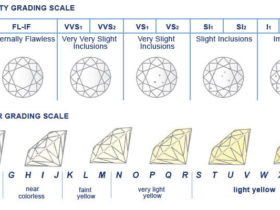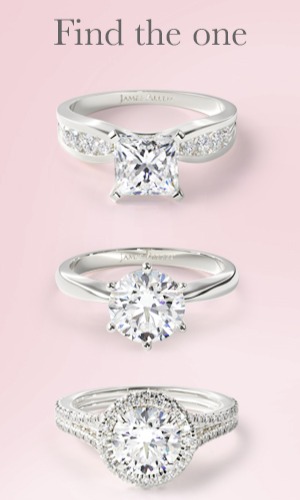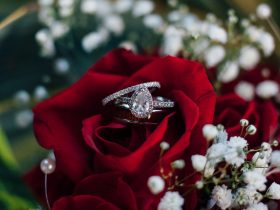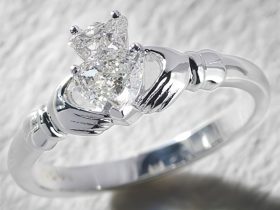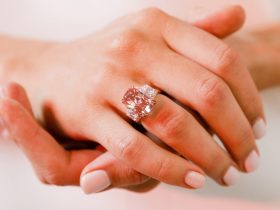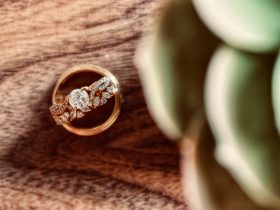Buying an engagement ring is a big decision. While there’s no “best” time to buy, waiting until a specific time of year could help you shave a small percentage off the total price of the diamond and setting.
Buying an engagement ring can be a daunting prospect. From cut and carat weight to color and clarity, a variety of factors — each complicated on its own — all play their own part in making the process of choosing a diamond surprisingly complicated.
Then, there’s the price. With high-quality diamonds often priced well in the thousands of dollars range, choosing one for your fiancée-to-be’s ring that fits your budget and meets your standards can seem like an impossible task.
Unlike most consumer goods, it’s difficult to “time” a diamond purchase for optimal value. Most of the diamond vendors you’ll want to shop with the price their diamonds fairly close to the market value, meaning this isn’t a product category in which you’ll typically see big discounts.
However, by shopping at the right time of year — and, more importantly, using a trusted, reliable diamond vendor – it’s often possible to get a high-quality diamond at a slightly lower price than you’d normally pay.
Drawing on our years of industry experience, we’ve put together a guide below to the process of timing a diamond purchase. Below, you’ll learn the best times of year to shop for diamond rings and other diamond jewelry, the best vendors and other tips to help you get a great deal.
First, Master the Basics of Shopping for a Diamond
The retail diamond jewelry industry is very different from most other products. This means that may of the usual “rules” of effective, value-focused shopping don’t apply.
For example, pretend you’re shopping for a new smartphone. You can reasonably expect that online retailers and brick-and-mortar consumer electronics stores will sell it for about the same price, perhaps with a slight edge online.
With diamond, this isn’t the case. If you compare diamonds across multiple vendors, particularly online vendors and brick-and-mortar vendors, you’ll often find almost identical diamonds selling for a wildly different price.
In our research, we’ve found that loose diamonds and diamond engagement rings sold online from trusted retailers like James Allen and Blue Nile are about 30-40% cheaper than diamonds with identical characteristics sold offline. In some cases, the difference is as much as 100%.
This occurs as a result of simple economics. Selling diamonds offline is expensive. First, there’s the rent – a huge amount of money if you’re the operator of a high-end diamond jewelry store in a desirable part of town.
Then, there are the salaries you need to pay, the electricity bills, the fit-out costs for retail stores, as well as countless other expenses. As a result of this, brick-and-mortar jewelry stores typically add large markups to the diamonds they sell.
The same is also true for other gemstones, in case you’re thinking of opting for a non-diamond engagement ring.
This means that you can usually save a significant amount of money by limiting your diamond engagement ring search to trusted online retailers. We’ve found that James Allen and Blue Nile typically have the best selection and most competitive prices in the industry.
Because online diamond vendors have much lower profit margins than offline retailers, it’s rare to see large discounts online. In fact, most online diamond vendors either don’t offer discounts on their diamonds, or online offer tiny discounts of a few percentage points.
With this said, you’ll often see discounts online for settings. This means that by shopping at the right time, you’ll often be able to save several hundred dollars on the setting, all while paying a competitive but not discounted price for the diamond itself.
In brick-and-mortar stores, you’ll often see discounts of 10%, 20% or more for diamonds. While these can look appealing, keep in mind that these retailers can afford to offer discounts as their normal pricing is significantly above the market value of the diamond.
In short, by buying a discounted diamond from a brick-and-mortar retailer, you’ll pay a little less than you normally would, but you’ll probably still pay too much.
Another factor to consider is that brick-and-mortar retailers rarely discount their highest quality diamonds. Instead, discounts are normally used to move old inventory that can’t sell at its full price, meaning you’ll usually only spot low quality diamonds in the sale display.
Second, Shop for Your Ring at the Right Time
Above, we’ve covered that it usually isn’t possible to get a significant discount on a diamond or other gemstone. However, it’s quite easy to get a reasonable discount on the engagement ring setting (the ring itself) by shopping at the right time of year.
An interesting quirk of the diamond jewelry industry is that retailers usually don’t run large sales when sales are slow. Instead, they tend to run competing sales at the busiest times of year as a way to capture as much of the market as possible.
No two diamond retailers are the same, meaning you might not always find items on sale at the same time. However, we’ve found that the following times of year are usually good times to start shopping:
Before Christmas
Christmas and the weeks leading up to it is one of the most popular times to get engaged. To cash in on this demand, many online diamond vendors will run sales on engagement ring settings, as well as a small range of gemstones.
If you’re planning to propose at this time of year, it pays to start shopping early. The most desirable, high quality diamonds can sell out fast, making it important to plan ahead and start shopping as soon as you notice discount offers popping up.
Thanksgiving weekend
Black Friday and Cyber Monday are both good days to shop online for diamond jewelry. During this period, you’ll usually find lower prices on a range of settings, as well as a few select offers on complete engagement rings.
Like with the pre-Christmas period, it pays to take action quickly if you’re shopping for a ring on Thanksgiving weekend. Other shoppers are aware that this is the time to snag a deal, meaning desirable loose diamonds and settings can sell quite quickly.
January & early February
If you’re planning a Valentine’s Day proposal, this can be a good time to start ring shopping. Most diamond jewelry vendors run some promotions before Valentine’s Day, usually with modest discounts on engagement ring settings.
For a Valentine’s Day proposal, it’s best to order your ring in early-to-mid January, as it can often take several days for the ring to be prepared and sent to you. As always, the earlier you order, the more time you’ll have to prepare for your proposal.
Other dates
Engagement ring sales generally decline throughout spring and summer, meaning you might occasionally be able to find certain settings discounted by retailers looking to clear out old stock.
As with other dates, it’s best to buy ahead of time. Aim to shop for your engagement ring around two months before you plan to propose so that you have as much time as possible to prepare.
6 Tips & Techniques to Maximize Your Value for Money
Beyond purchasing online and shopping at the right time of year, there are several other tactics that you can use to save money on a diamond engagement ring:
1. Start shopping at least two months before you propose
This way, you’ll have plenty of time to compare deals and work out what you want. If you buy a loose diamond and a separate setting, this also allows more than enough time for the ring to be made.
2. After some basic research, set your budget
It’s easy to spend significantly more than you originally planned to on an engagement ring, especially once you start assembling a loose diamond and setting online.
After you’ve worked out what you want in a diamond and engagement ring setting, it’s important to set a firm budget. Think carefully about how much you’re willing to spend, then make it a hard limit to prevent yourself from overspending.
3. Only consider GIA certified diamonds
The Gemological Institute of America (GIA) is the world’s most respected gemstone grading entity. By buying a GIA certified diamond, you’ll ensure you’re receiving a diamond of a certain quality level.
GIA certification lists a diamond’s carat weight, color, clarity and cut, making it a useful tool for comparing diamonds using an objective standard. In general, it’s best to avoid any vendors that don’t offer GIA certification for their diamonds.
4. Alternatively, look for AGS certification
Some diamond jewelry vendors certify their diamonds and other gemstones with the American Gem Society (AGS). While it’s less common than GIA certification, this is also a reliable, trustworthy form of grading.
5. Check a diamond’s quality before buying
It’s worth spending an hour or two to learn the basics of the four Cs of diamonds before you start shopping. This way, you’ll be able to quickly compare diamonds on their specifications and avoid low quality products.
Since brick-and-mortar retailers often discount their lowest quality diamonds, it’s always important to check factors such as clarity, color and cut instead of focusing purely on a diamond’s carat weight.
6. Compare diamonds by price & quality, not discount
It’s easy to be drawn in by huge discounts and other sales tactics when comparing diamonds. Instead of focusing on the percentage discount, try to focus on the final price when comparing diamonds.
Conclusion
While diamonds aren’t as frequently discounted as most consumer goods, buying at the right time can still help you shave a few percentage points off the total cost of your fiancée-to-be’s engagement ring.
Start searching early, apply the tactics above and look out for major promotional periods and you’ll find it easier to track down a loose diamond and engagement ring setting that matches your needs, all at an unbeatable price.

